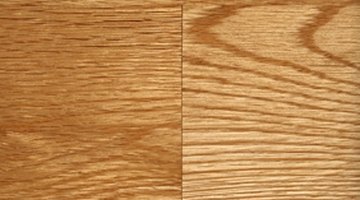How to Shim a Wood Floor
Installing a wood floor adds a distinct character to your room; however it must be installed properly to last a long time. Sometimes a wood floor is installed next to another flooring material, like tile. If it is thicker than the hardwood floor boards, then you must shim the hardwood floor in order to create a perfectly flat and unnoticeable transition. The shimming raises the floor boards up to the same level as the tile so a threshold is not necessary, and the installation appears to be seamless.

-
Lay the wood floorboards in place along the edge of the thicker flooring surface. Measure the difference in height between the top of the wood floorboards and the top of the thicker flooring surface. Do not rely solely on the difference in thickness as noted by the manufacturer. Take your own measurements as variances in the subfloor affect the actual differences between the two installations.
-
Lay down multiple layers of felt underflooring as you would in your typical installation. Leave 1 to 2 feet of additional length near the edge of the seam between the hardwood flooring and the thicker flooring material.
-
Fold back one to three layers of the felt at the edge of the seam for the two flooring materials. Lay the hardwood flooring on top of the layers and then check the remaining distance between the two materials. If additional shimming is needed, lay down an extra piece of felt to raise the flooring. If less shimming is needed, fold one of the layers back and cut it flush to the thicker flooring.
-
Repeat this process in any area where the hardwood floor needs to be raised.
Resources
Writer Bio
Steve Smith has published articles on a wide range of topics including cars, travel, lifestyle, business, golf, weddings and careers. His articles, features and news stories have appeared in newspapers, consumer magazines and on various websites. Smith holds a Bachelor of Arts in English and journalism from University of New Hampshire Durham.
Photo Credits
- hardwood floor texture image by GoodMood Photo from Fotolia.com
More Articles



